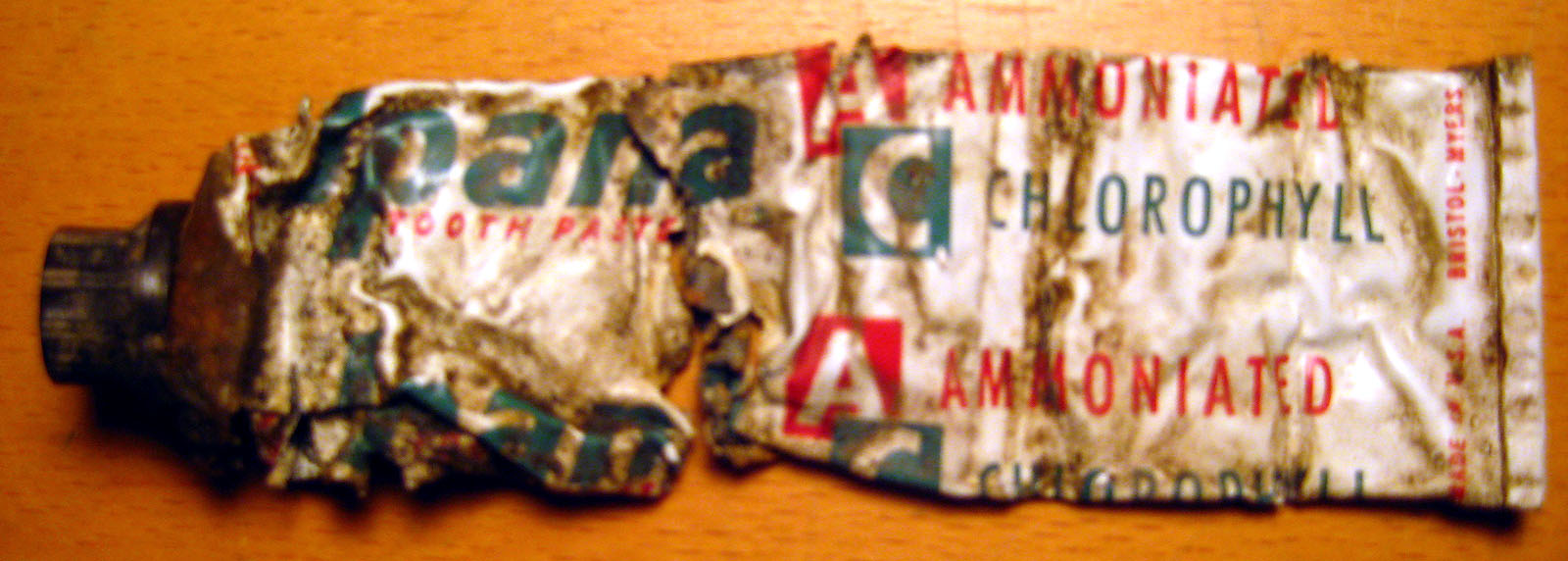It’s time again for another installment of “What Lies Beneath” and today what we’ve found out in the backyard is this crumpled up tube of toothpaste (quick to quadruplify):
This isn’t just your run-of-the-mill container of Crest, folks. Nay. This is glorious Ipana from Bristol Myers, a brand that dates back to 1915. But thanks to the glory of the internet when I typed in “Ipana Ammoniated Chlorophyll Toothpaste” into the Magical Googlizer it revealed to me this article that appeared in Time magazine in April 1952 looking at the wonderful marketable qualities of chlorophyll being foisted on the buying public:
Hucksters of toothpaste, who have plugged their products with such mysterious words as “Irium” and “ammoniated,” now have a new open-sesame to sales. The word is chlorophyll, the substance that makes plant life green. Lever Brothers was the first to market a chlorophyll toothpaste; in two months its bright-green, minty Chlorodent has helped push Lever, which also sells Pepsodent, from third to second in toothpaste sales. By last week, Chlorodent had thrown such a scare into the rest of the industry that Colgate, the No. 1 toothpaste seller, as well as Bristol-Myers (Ipana), Whitehall Pharmacal (Kolynos) and other big manufacturers were rushing chlorophyll toothpastes of their own on the market.
So 1952 was the birth year of Ipana’s Ammoniated Chlorophyll Toothpaste, which means this decrepit tube that we unearthed near the backyard hammock could be as much as 55 years old. I’m not sure when Ipana discontinued offernig “ammoniated” and “chlorphyll-filled toothpaste but on the Ipana Wiki page it says sales of the brand was discontinued in the early 1970s, potentially putting the closing bracket on this relic’s time window at 35 years give or take.

 Follow
Follow